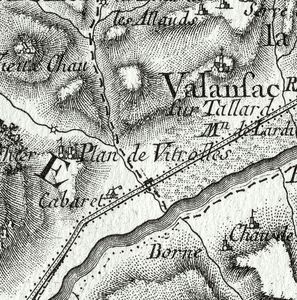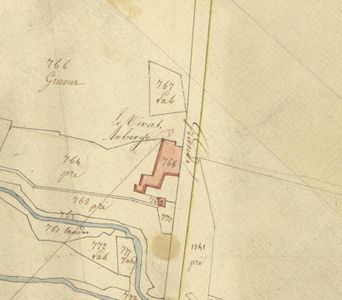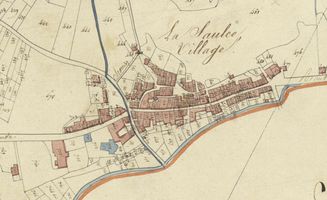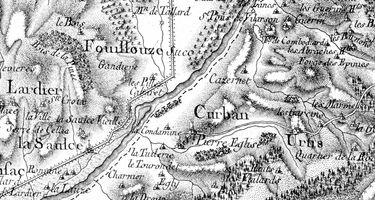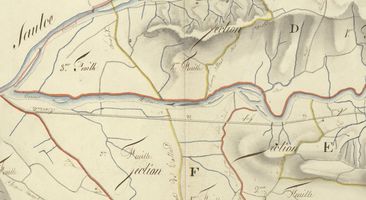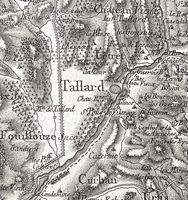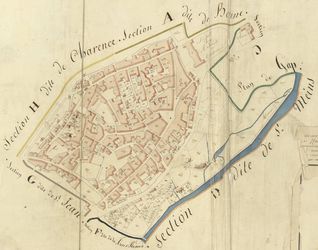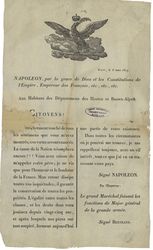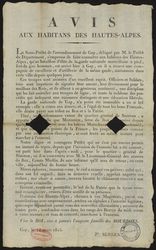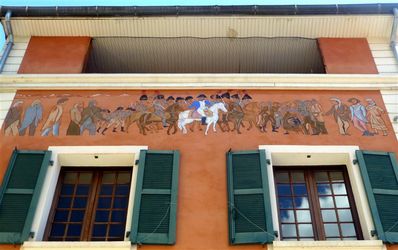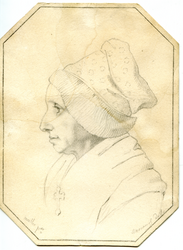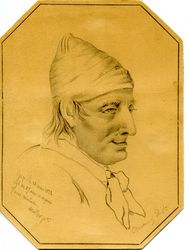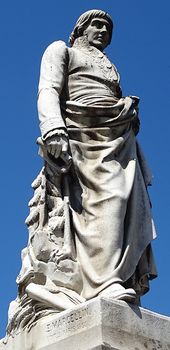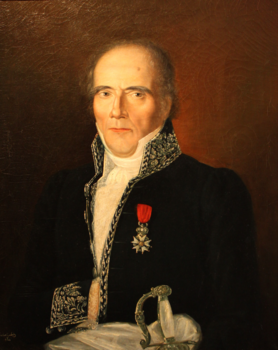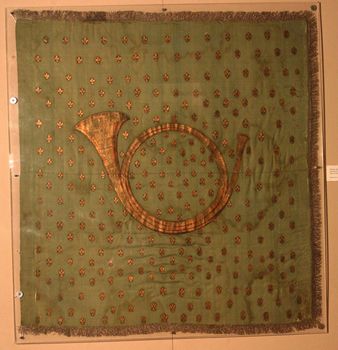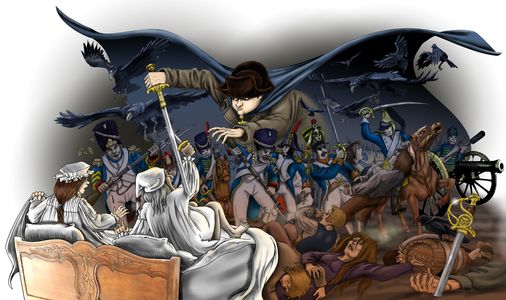The Napoleon Road
Napoleon in the Hautes-Alpes
On March 5, after leaving Malijay, Napoleon headed for Gap, the goal of his next stage. Around noon, he had lunch in Sisteron. In the early afternoon, he entered the Hautes-Alpes and made a first stop at Le Poët in front of the mayor's house, opposite the church.
Then, he continued his journey to Rourebeau in the commune of Upaix. There a crowd of 3 to 4,000 people awaited him, gathered by the mayor, César de Saint-Genus, who had remained loyal to the emperor. Napoleon responded to the mayor's welcome with these words:
"I know the good spirit of the Dauphinois. I have been at peace since the hour I set foot on the territory of the Hautes-Alpes".
At about five o'clock Napoleon took to the road again, stopping for a moment at the Vivas inn in Vitrolles and then heading for La Saulce. On his way out of this village, he met up with former soldiers at the Auberge des Piles and greeted them, then joined Gap through the plain of Lachaup.
It was around ten o'clock in the evening that Napoleon returned to Gap where he slept at the Marchand Inn. There he received the mayor and his municipal council. The next day, March 6, Napoleon had a meeting with the secretary general of the prefecture, Pierre-Antoine Farnaud, and wrote his proclamation to the inhabitants of the Hautes and Basses Alpes.
In the early afternoon, it was time to leave for Corps, his next stop. Through the Bayard pass and the Champsaur valley he reached this city. At La Fare, a village in the Champsaur near Saint-Bonnet, he stopped to greet the father of one of his grenadiers, an 85-year-old man who wanted to see the emperor before he died.
On March 7 Napoleon was at La Mure, then faced a royalist regiment at Laffrey. There he said: "Soldiers! Brothers in arms! I am your father the Emperor of your choice, shoot him if you have the courage."
An ovation followed. That evening Napoleon was in Grenoble, on March 20 in Paris.
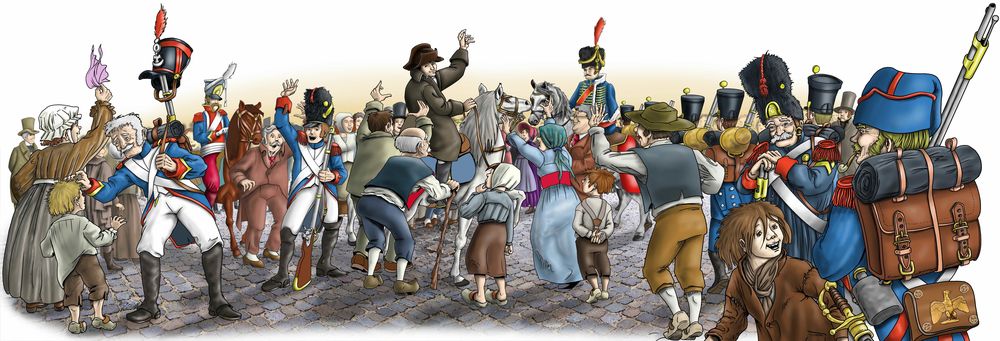
Vitrolles : The Inn of Vivas
It must have been around 6 pm, night had fallen, when Napoleon stopped at the Vivas Inn in the Commune of Vitrolles. The inn was owned by Eugène, François, Auguste d'Arnaud de Vitrolles, who was appointed baron by Napoleon in 1812 but secretary of state for Louis XVIII in 1815.
The mayor of Upaix, César de Saint-Genis, who accompanied the emperor, pointed out to him that he was crossing the lands of a man who, taking everything from his kindness, had contributed to his loss by the most unworthy means. Napoleon replied: "I want him to know that I paid him a little visit."
La Saulce
After leaving the Vivas inn, Napoleon and his escort crossed the village of La Saulce in the light of the illuminations and the sound of cries of "Vive l'Empereur". On leaving the village, the troop entered the narrow gorge between the Durance river and the mountain.
At the exit of this dangerous passage, at the auberge des Piles, at the confluence of the torrent Le Rousine with the Durance, the inhabitants of Tallard, Fouillouse, Urtis and other villages gave Napoleon a standing ovation and danced the farandole around a bonfire.
From Tallard to La Tourronde
Lodging the torrent Le Rousine on the commune of Tallard, Napoleon reached the hamlet of La Tourronde at the entrance of Gap by the plain of Lachaup where the inhabitants of Sigoyer, Pelleautier, Neffes and Châteauvieux cheered him.
March 19, 1815: Threat to Tallard
On March 19, Tallard was threatened by the general Loverdo, commander of the royalist troops of a military constraint of 400 men if the boat which allows to cross the Durance was not sunk. Advised by Pierre-Antoine Farnaud, the town council of Tallard plunged partly the boat in water in a corner of the river little attended and hidden from the glance. Then, old ropes and tackle were sent to Sisteron to witness the execution of the general's order.
The entrance to Gap
Napoleon entered Gap through the Porte Colombe, the southern entrance to the city. From there the procession followed the rue Droite and proceeded to the Place Saint-Etienne and then to the Marchand Inn. Pierre-Antoine Farnaud, secretary general of the Prefecture, describes Napoleon's arrival around ten o'clock in the evening.
"The procession arrived; Bonaparte on horseback with some of his generals, covered with his coat, occupied the middle of two lines formed by his soldiers. It was indeed him. Besides, wasn't his little hat with three horns there to reinforce my conviction?"
The proclamation to the inhabitants
It was in the Marchand Inn, that before leaving Gap, Napoleon wrote the proclamation to the inhabitants of the Hautes and Basses Alpes departments:
"Citizens,
I have been deeply touched by all the feelings that you have shown me.
Your wishes will be fulfilled. The cause of the Nation will triumph again.
You are right to call me your father; I live only for the honor and happiness of France.
My return dispels all your worries [...]
In all the circumstances in which I may find myself, I will always remember with keen interest, all that I saw while crossing your country."
March 7: 2,900 royalists occupied Gap
At the first news of Napoleon's landing, 1800 royalists from Marseilles asked the authorization to General Masséna, military governor of Marseilles, to leave to block Napoleon's way. When Masséna gave them the signal to leave, the attempt ended in failure as they reached Sisteron after Napoleon had passed.
Nevertheless, the Marseilles volunteers continued their route to Gap, wanting to punish Gap for its insolence and temerity in welcoming Napoleon. The number of royalist troops swelled as the days went by, with the arrival on March 11 of 700 volunteers from the Var and on March 13 of 400 men from the Marseilles National Guard. On March 14, they left Gap threatened by the arrival of a corps of 1,800 men loyal to Napoleon.
The royalists from Marseilles occupied Gap again on March 28 and were driven out on March 31, again on April 3, but retreated on April 4 before the last expedition that ended with the battle of Les Piles at La Saulce on April 7.
The eagles at the entrance of Gap
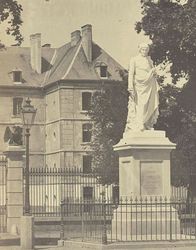
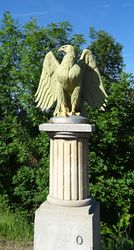
The eagles at the entrance of Gap, erected on a pedestal, seem to have landed here to signify that we are indeed on the Napoleon road, recalling this sentence of the Emperor written in Golfe Juan on March 1st 1815 in his letter to the army: "The Eagle with the national colors will fly from steeples to steeples to the towers of Notre Dame."
These eagles pay homage to Napoleon when he decided on October 9, 1810, to create a begging depot in the old barracks of the city of Gap. The eagles were placed on the gate of the barracks. They can be seen on a photo taken by Camille Rava, photographer in Gap, in September 1866 during the inauguration of the statue of Baron de Ladoucette.
In 1871, the two royal eagles that were on the pillars of the entrance gate to the barracks yard were removed. They were placed in the Château Girard.
In March 1887 the old barracks became the Desmichels barracks, named after General Louis Alexis Desmichels.
The Marchand Inn
The Marchand Inn, where Napoleon and his staff stayed, was the only somewhat comfortable inn in Gap. It was composed of two houses served by a narrow corridor. The house to the right of the entrance, with its colorful facade and fresco, is the dining room on the second floor. The bedrooms and the one where the emperor slept were in the house to the left of the entrance.
This house, today 17 rue de France, rue Porte Lignole in 1815, was the inn of the couple Marchand Joseph and Jeanne Marie Charlotte, where in the XIXth century Stendhal (1806), Napoleon I (1815) and Adolphe Thiers (1822) stayed
The Napoleon refuge at the Col de Manse
On April 15, 1821, at Longwood on the island of St. Helena, Napoleon wrote his will.
"I bequeath my private estate, half to the remaining officers and soldiers of the French army, who fought from 1792 to 1815 [...]; half to the towns and countryside of Alsace, Lorraine, Franche-Comté, Burgundy, Ile-de-France, Champagne, Forez, Dauphiné which would have suffered by one or another invasion."
On August 19, 1854, the prefect of the Hautes-Alpes was informed of Napoleon III's decision to create a lasting charitable institution that would perpetuate in the hearts of the people the religious memory that Napoleon I had honored them with.
On May 6, 1855, the newspaper Le Moniteur published the choice of the General Council of the Hautes-Alpes:
"The sum will be provisionally placed in annuities on the State and the income employed in scholarships or half-scholarships, in favor of poor blind and deaf-mute people of the department."
On August 25, 1856, as the bequest could only be partially allocated, the prefect of the Hautes-Alpes, Alexandre Le Peintre, proposed to the General Council the creation on the main passes of the department, of relief houses that would bear the inscription: Refuge Napoléon Legs of the Emperor Napoléon I - Napoléon III Emperor.
Eight refuges were planned. In 1858, six were built including the refuge of the Manse pass.
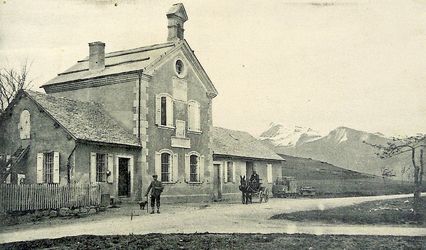
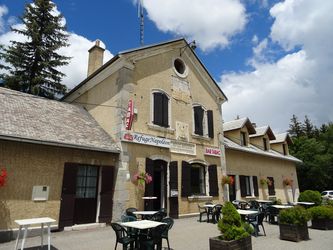
At the Departemental Museum
Charles-Louis d’Abon
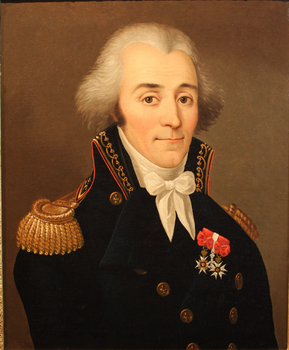
This engineer-military, retired colonel of the engineering, was named by imperial decree of Napoleon, mayor of Gap in 1813. His portrait is kept in the Museum of the Hautes-Alpes in Gap.
On March 5, 1815, during Napoleon's visit to Gap, Charles-Louis d'Abon, who considered Bonaparte's expedition "quite adventurous", and who did not hide the fact that "this whole world was running to its ruin", only agreed to visit Napoleon at the third request made by General Bertrand. During the meeting Charles-Louis d'Abon and his council avoided using the terms "Sire", "Majesty" and "Emperor" in response to questions posed by Napoleon. When asked by Napoleon what he thought of his return, he would have answered "I think it is unfortunate for France as well as for you.
But a few days later, he took up the cause of Napoleon. "Louis XVIII on the throne, he burned his incense at his feet, as no doubt he had done under the Empire; this unfortunate fallen king, Monsieur d'Abon prostrated himself before the new sun in the hope that its rays would shine on him." wrote the secretary of the prefect Harmand.
Charles-Louis d'Abon resigned as mayor in October 1815.
Charles-François Ladoucette
In 1802, Napoleon Bonaparte appointed a young 29 year old administrator, Charles-François Ladoucette, as prefect of the Hautes-Alpes. Appointed Baron of the Empire, he held the position until 1809.
In an interview with Pierre-Antoine Farnaud, on March 6, 1815, Napoleon stated "The department owes him a lot". Farnaud evoked the Central School and the Museum of Gap in the former major seminary, the opening of the Montgenèvre and Cabre Pass roads as well as the archaeological discoveries of the Roman city of La Bâtie-Montsaléon. And Napoleon concluded: "The particular character of his administration was the useful and the wonderful".
A statue of Ladoucette, sculpted by Jean-Esprit Marcellin was erected in Gap on September 23, 1866.
A bronze of the prefect Ladoucette, made by Eugène Louis Le Quesne, can be seen at the Musée Muséum départemental des Hautes-Alpes.
Pierre-Antoine Farnaud
The Secretary General of the Prefecture, Pierre-Antoine Farnaud, had a long conversation with Napoleon on Monday morning, March 6. The latter asked him about the city of Gap and its 7,000 inhabitants, and about the department and its 125,000 inhabitants. In turn, he talked about the youth who contributed to making good soldiers and the military who could be given a higher rank. After industry and commerce, it is agriculture that interests Napoleon the most. Farnaud told him that the creation of dikes, nurseries and irrigation canals as well as the maintenance of roads should be encouraged.
To the question "What did you get from my government?" Farnaud answers magnificent roads, bridges made of cut stone, in Gap a beggar's depot and in Embrun, a house of detention.
After Napoleon's departure, Pierre-Antoine Farnaud was named interim prefect on March 6.
The pennant of the Corsican riflemen
When leaving Gap, Napoleon left the pennant of the Corsican riflemen battalion, a formation raised on the island of Elba.
It is a green silk pennant with gold bees and a golden horn in the center.
Made in Naples, it has a small golden fringe on three sides.
This pennant of 95 cm x 90 cm is preserved in the Departmental Museum in Gap.
It was donated by the city of Gap in 1910.
Anecdotes
The prefect's dream
On March 3, at the end of lunch, Prefect Harmand learned that Napoleon had landed. During the night of March 3 to 4, the prefect had a terrible dream that kept him awake part of the night.
"I dreamed," he said, "that I was in a battle, fighting against people who gave no quarter. Bonaparte was with them; having seen me, he flew at me, carrying a sword in his hand, I was armed with a dagger. We ran one on the other and we fought to the utmost, knocking each other down and rolling over and under each other, when my wife, awakened by my movements, pulled me out of this awful dream".
The chimney fire
This event is recounted twice, once on the evening of March 5, the other on the morning of March 6, but the facts remain the same as to Napoleon's reaction.
A large fire, lit to heat his room, set the chimney on fire. Without losing his cool, Napoleon grabbed a pistol and fired a shot through the opening. Under the effect of the explosion, the flaming soot fell and the fire was extinguished almost instantly.
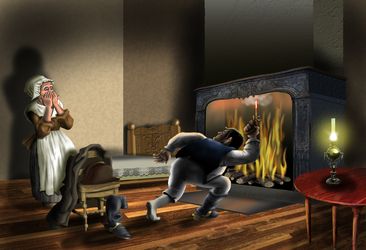
The team of the Tourist Office would like to thank Mr. Jean-Pierre Jaubert for his involvement and for writing our column on Napoleon.




